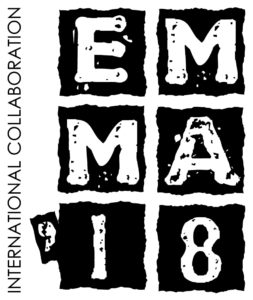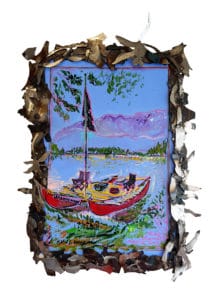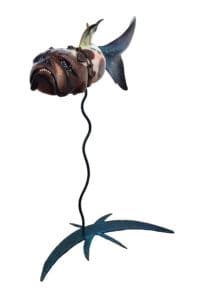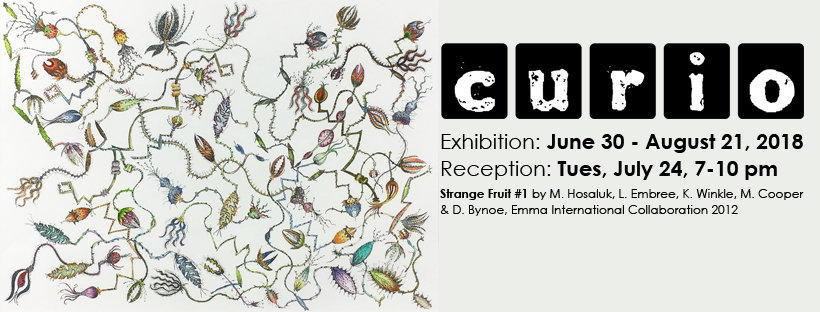 EMMA HISTORY
EMMA HISTORY
The Emma International Collaboration (Emma for short) began as woodturning and furniture symposiums in Saskatoon, Saskatchewan in 1982 at the Kelsey Campus. Organized by the Saskatchewan Craft Council and artists Michael Hosaluk, Don Kondra, and Jamie Russell, the symposiums were created as there was a lack of formal craft education in Saskatchewan. In 1996, due to the closure of the Kelsey Campus cabinetry program, the event moved to the Emma Lake Kenderdine Campus, an artist retreat in the northern boreal forest operated by the University of Saskatchewan (hence the name Emma for the collaboration). It was here where all formal instruction at the event was dropped for the open studio, “no format” format the event is known for today. At the same time, many new ways of making were introduced including blacksmithing, glass etching, beadwork, and painting, to the point where Emma now incorporates almost every craft imaginable.
Emma moved to the Ness Creek site in 2006, where it is currently located. Since its start in 1982, Emma has come to symbolize a legacy of creativity and making, and most importantly, represent a connection between artists that can last for decades. The International Collaboration hosts artists from all over the world, many who attend for years and make long-lasting friendships. The works created at Emma are unique and effervescent – they sell quickly at the Emma Auctions and take residence in a collector’s home.
CURATORIAL STATEMENT

The Emma International Collaboration, in all its various forms, started in the 1980s. Born out of a need for formal craft education in Saskatchewan, the early symposiums were organized by Michael Hosaluk, Don Kondra, Jamie Russell, and the Saskatchewan Craft Council. The event now takes place every two years at the Ness Creek Festival Site and brings together artists from across the globe to share in an experience of raw creation and open possibility. Artists at various stages of their careers are challenged to step outside of their usual art practice, to explore medium, technique, and subject matter through hands-on collaboration and creative exchange. The result is one-of-a-kind pieces created by artists who may otherwise never work together. The very best pieces are then presented for auction.

“HMCS Shawkinaw: Doug Taylor and Jeff Nachtignall’s Boat on Ness Lake” by John Cooper, Andrew Raney
Our original intention for this exhibition was to carefully curate a selection of Emma artworks, representing a range of media and artists in a retrospective look at the Emma International Collaborations. What we found, however, upon visiting the homes of collectors, had us naturally evolve the exhibition to what you see in the gallery now. We have still tried to represent a wide range of artists and media, from as far back as 1998 to the most contemporary pieces available. However: Emma is messy; organic; weird; and BIG. If not big in size, then big in labour, concept, colour, or unusual material (so much human hair!), personalities, and experiences. This exhibition is similarly weird, big, and completely unexpected.
Curio is about the artwork – but it is also about the stories behind the artwork. As we photographed, recorded, and packed artworks at collector’s homes, we heard stories from the collectors, most of whom were artists themselves and had participated in or even coordinated past Emma Collaborations. These stories are as integral to the artwork as the technique and skill that made them. These works not only decorate homes, but they hold within them memories and experiences. This is not to say that collecting art is only for the artists, in fact as one collector noted:

“Bulldog Fish” by Mark Orr, Miranda Jones, Farrell Rupert, Trent Watts, Veronica Tricker
“Collecting is an art form in itself, a creative endeavor. A good collector is thoughtful, judicious, and not fickle, and collecting goes beyond mere acquisitiveness. It often involves a lifelong conversation with an artist, an art form, or a specific style. It requires passion, tenacity, and individuality.”
Curio is a menagerie of personalities made manifest in art. Some pieces are gifts, expressing gratitude and holding memories; another piece was brought to many Emma’s, over and over, receiving encouragement and critique until the piece was finally completed years later. Many artists figure out who they are at a place like Emma – you can see the effect in their practice. There are trends, familiarity, relationships, humour, and grief, held in every object. Not only does this exhibition provide us with an intimate view into the homes of collectors, but it also pays homage to the legacy of Emma.
Thank you to the collectors who graciously allowed us into their homes and responded to our many questions about years, names, and delivery schedules. A special thank you to our Exhibitions Assistant, Lucas Morneau, whose persistent archival research helped us uncover details from decades ago, off of faint pencil-written sheets and a wide variety of digital record-keeping! Thank you to the Emma International Collaboration Committee, whose dedication to Emma is inspiring. And finally, thank you to all the Emma participants, past and present, without you the collaboration would not be what it is, and this exhibition would not be what it is.
— Stephanie Canning and Maia Stark, Curators, SCC Exhibitions and Education Coordinators
